The Potemkine: Movie famous:
The very name of Potemkine evoke the Russian 1905 Revolution, and one of, if not perhaps the most famous propaganda movie of all times. This is also perhaps the most famous mutiny since the Bounty and the Batavia, and probably the best known of the XXth century.
We have to scratch this myth however here to find the battleship.
The Potemkine indeed was left behind during the Russo-Japanese war, and most experienced officers left the black sea to be re-affected in Pacific fleet vessels after crippling losses. Therefore, the ship was left mostly idle with inexperienced officers. We will dig into this history of the mutiny but also the less known career of the Panteilemon during WW1, and her end.
Development and order of the Potemkine
Planning for her construction started as early as 1895. Indeed the idea was just to use the slipway scheduled to be available at the Nikolayev Admiralty Shipyard a year later. The Naval Staff worked with Black Sea Fleet Vice Admiral K. P. Pilkin, on the first draft of the new pre-dreadnough battleship, derived from the Peresvet. However their initial work was over-ruled by General Admiral Grand Duke Alexei Alexandrovich. He decided to discard the 254 mm guns and long range were ill-adapted for the Black Sea. He strongly suggested the Tri Sviatitelia instead. The new initoal design integrated a higher forecastle for better seakeeping, a Krupp cemented armour and Belleville boilers. Many changes were imposed by departments of the Naval Technical Committee but the final design was approved on 12 June 1897. More changes slowed the ship’s construction also.
Construction really started on 27 December 1897. Provisions were made and alteration to the plans, so that she was laid down at the Nikolayev Admiralty Shipyard only on 10 October 1898. She was named after Prince Grigory Potemkin, Russian soldier, statesman, and favorite of Queen Catherine of Russia. She was launched on 9 October 1900, but only towed to Sevastopol for fitting out in July 1902, two years after. She started her sea trials in September 1903 but they went on until early 1905. Meanwhile the main gun turrets were completed.
Design
Potemkin was 113.2 m long (waterline) or 115.4 m overall for a beam of 22.3 m and maximum draught of 8.2 m (see the specs for feets and inches measurements). She displaced 12,900 long tons, meaning this was 420 long tons over her initial designed displacement (12,480 t). Her crew comprised 26 officers and 705 enlisted men, including a Marine company.
Powerplant
The ship had two propeller shafts, mated to a pair of three-cylinder vertical triple-expansion steam engines. Total designed output was 10,600 indicated horsepower (7,900 kW). These were fed by a battery of twenty-two Belleville boilers working at a pressure of 15 atm (1,520 kPa; 220 psi). Eight of these were locatd in the forward boiler room, oil-fired and the remaining fourteen were coal-fired. Sea trials showed a top speed of 16.5 knots (30.6 km/h; 19.0 mph). However oil leaks caused a fire on 2 January 1904 and this imposed a conversion to all-coal burning boilers. The Potemkine carried up to 1,100 long tons (1,100 t) of coal in war time, stored in side cofferdam sections. Range was limited to 3,200 nautical miles (5,900 km; 3,700 mi) at 10 knots (19 km/h; 12 mph) cruise speed.
Protection
The battleship was defended by Krupp cemented armour. The waterline belt was 9-in thick or 229 mm, down to 8-in (203 mm) abreast the magazines but covering the center of the ship along 237 feet (72.2 m). Both ends were protected by a 2-in stray of armour (51 mm). The belt height was 7 feet 6 inches (2.3 m) and it plunged below the waterline of about 5 feet (2 m), tapered down to 5-in (127 mm) at the bottom edge to form a citadel. Both extrermities were closed by 7-in (178 mm) transverse bulkheads.
The upper strake above te belt was 6-in thick and over 156 feet (47.5 m) long, also enclosed by transverse bulkheads. The upper casemate housed the six-inch guns, 5-in thick all around. The main turrets sides were 10-in (254 mm) thick whike the roof was 2-in roof. The conning tower was 9-in thick. The armoured deck was made of 2-in thick (40 mm) nickel-steel plates, up to but 2.5 inches (64 mm) on the slopes connected to the armour belt. Forward and aft of the armoured citadel, the deck was 3-in (76 mm) thick but during the 1911 refit she received 1-in (25 mm) additional armour plates fore and aft, better protecting the ends of the ship.
Armament
Main artillery of the Potemkine consisted of two turrets, housing two 40-calibre 12-inch (305 mm) guns each fore and aft of the main superstructure. They were electrically operated and derived from the Petropavlovsk-class design. Their maximum elevation was +15°, but their rate of fire was just one round every four minutes in trials. Each fired fired a 745-pound (337.7 kg) shell at 2,792 ft/s (851 m/s). Range was 13,000 yards (12,000 m) at 10° angle, and 60 rounds were carried for each gun, presumably HE and AP, so 240 total on board.
Secondary armament comprised sixteen 6-inch (152 mm)/45 Canet Pattern 1891 quick-firing (QF) guns. They were were mounted in casemates in the main superstructure. Twelve were located lower on the sides of the hull, while four were located at the corners of the superstructure. They fired 91.4 lb (41.46 kg) shells at 2,600 ft/s (792 m/s) and to 12,602 yards (11,523 m) at +20°. In all, 160 rounds were stored per gun, so 2560 in all.
Tertiary armament comprised small quick-firing guns for anti-torpedo boat warfare. These were fourteen Canet QF 75-millimetre (3.0 in)/50 guns, four in hull embrasures and ten higher up in the superstructure. 300 shells was provisioned on board for each gun, so 4200 projectiles in all. These were 11-pound (4.9 kg) shells, fired at 2,700 ft/s (820 m/s), to a range of 7,005 yards (6,405 m). In addition smaller, faster Hotchkiss 47 mm (1.9 in) Hotchkiss guns were also mounted. Four were placed high up in the fighting top and two on the superstructure. Their shells weighted just 2.2-pound (1.00 kg), and exited the barrel at 1,400 ft/s (430 m/s).
In complement, they had five underwater 15-inch (381 mm) torpedo tubes, one in the bow, and two either broadside. Two spare torpedoes were stored for each tube. The M1904 was their first model, equipped with a 150 pounds (70 kg) warhead and capable of 33 knots (61 km/h; 38 mph), up to 870 yards (800 m) range.
Modernizations
Optics-wise, the Potemkine was equipped in 1907 with different telescopic sights for the 12-inch and 6-inch guns. In 1908 a new refit saw them equipped with 2.5-metre (8 ft 2 in) rangefinders. The bow torpedo tube was removed in 1910–11, as well as the fighting top. In 1912 this was the turn of the main-gun turret machinery, completely replaced for faster traverse. The secondary guns were also upgraded to fire one round every 40 seconds. Lastly, two 57 mm (2.2 in) AA guns were mounted on the superstructure in June 1915, and in 1916, two 75 mm AA guns on top of each turret were mounted while four remaining torpedo tubes were removed.
First life: The Potemkine and mutiny
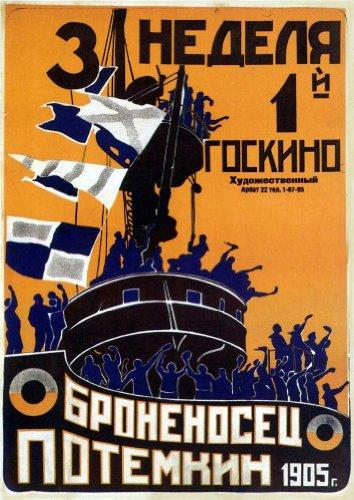
First vintage poster of the movie.
The background of the mutiny was the Russo-Japanese War of 1904–05. Black Sea Fleet’s most experienced officers has been transferred to the Pacific and lost. Between raw recruits and inexperienced officers out of school, news of the disastrous Battle of Tsushima in May 1905 made the morale plummit. This was compounded by the routine of labour and no important exercises or sorties planned to motivated the crews. Already in 1905 riots and uprisings were taking place, and the Central Committee of the Social Democratic Organisation of the Black Sea Fleet (“Tsentralka”) planned a simultaneous mutiny on all of the fleet.
The spark: A spoiled Borscht
On 27 June 1905, Potemkin was practicing gunnery near Tendra Spit, near the Ukrainian coast. At lunch, a borscht made from rotten meat, partially infested with maggots, infuriated the men. The revolt was sparked by Ippolit Giliarovsky (second in command) which threated to shoot some of the crew members, allegedly, for their refusal to eat the Borscht and calm down. As the situation degraded he called for the onboard marine guards. He went as far as calling for a tarpaulin to protect the decks from blood as well as the crew. This only aggravated the violence and in what followed, Grigory Vakulinchuk, one of the mutiny’s leaders, was killed. The mutineers immediately killed Giliarovsky and next seven of the Potemkin’s eighteen officers, including the Captain, Evgeny Golikov. Some of them also captured the nearby torpedo boat Ismail (No. 627). The men set up a committed and elected as captain captain Afanasi Matushenko.
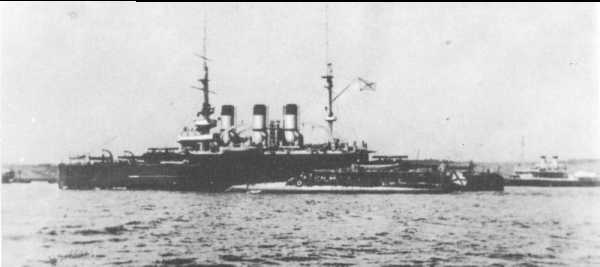
The “mutineer fleet” in June 1905, Potemkine and Ismail, alongside.
The mutiny spread
The committee then decided to sail to Odessa, flying the red flag. They arrived at 22:00 whereas a general strike and riots took place in the city. The following day, a landing party was sent to help revolutionaries to take over the city. Meanwhile, the rest of the crew waited for the other battleships of the Black Sea Fleet to arrive. The Potemkin also captured the military transport Vekha. Port area was soon destroyed by fire. On 29 June a funeral turned into a political demonstration. The army ambushed sailors participating in it and the ship soon fired two six-inch shells at the theatre where army officers were stationed, missing.
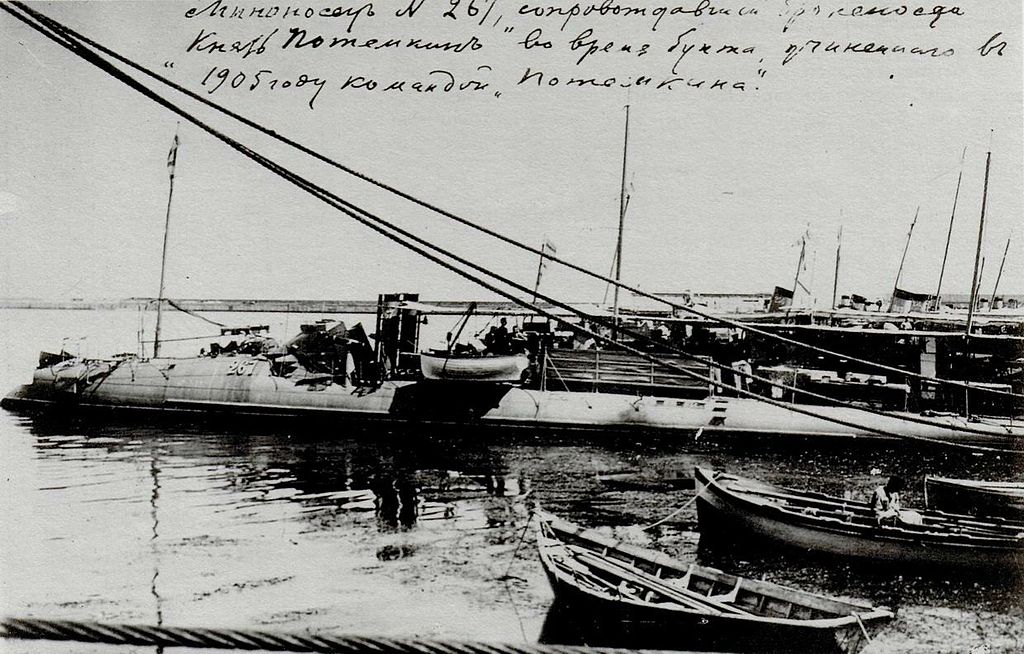
Minonosets (“Torpedo Boat”) N°267, or Ismail, which was captured by the Potemkine and accompanied the battleship to Romania and Crimea.
The government reacted to the news and scrambled two squadrons to Odessa. Thei mission was to constrain the ship to surrender or sin her. On 30 June, the battleships Tri Sviatitelia, Dvenadsat Apostolov, and Georgii Pobedonosets of the first squadron arrived but they turned away. The second squadron (Rostislav and Sinop) led by Vice Admiral Aleksander Krieger ordered the first suqadron’s ships to proceed to Odessa anyway. Potemkin this time made a daring sortie, preparing to fire against the combined squadrons. However both sides declined to open fire. In the end, Captain Kolands of Dvenadsat Apostolov ordered a ramming on Potemkin, and when close enough, to detonate his ship’s magazines. His own crew prevented the move. Vice Admiral Aleksander Krieger, not sure of the loyalty of his crews eventually ordered his ships to fall back. On Georgii Pobedonosets the crew mutinied in turn however and joined Potemkin.
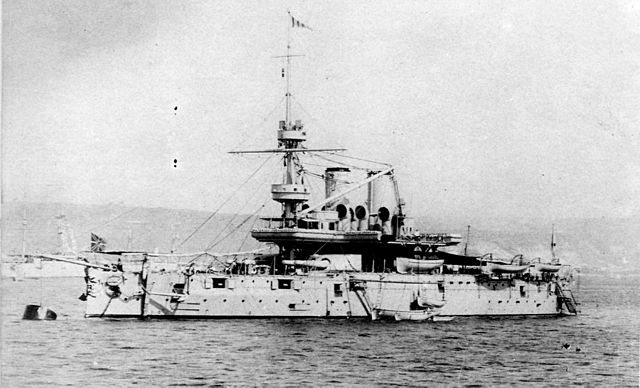
The old battleship Pobiedonosetz, which also mutinied, but was retaken by loyalists and ran aground in Odessa.
The Romanian escapade
The Battleship Georgii Pobedonosets was soon in turmoil and the nex day at noon, the loyalists retook control of the ship and ran her aground in the harbour. Deprived of this help and fearing a blocus, the Potemkin’s reavolutionary comitted voted to sail together with Ismail for Constanța, in Romania, to restock food, water and coal. However upon their arrival, the Romanians refused to provide supplies, and the Russian ships were threated by the small protected cruiser Elisabeta. At some point, the crew asked to pucrchase it, which was refused also. The committee next voted to reach the smaller port of Theodosia in Crimea to resupply. They arrived in the morning of 5 July, but there too, the city governor refused to supply them anything but some food. The mutineers then tried to land a party and proceed to capture by force several barges of coal. They were soon ambushed and killed or captured by the port garrison. Then the mutineers decided to sail to Constanța again, they reached on 7 July.
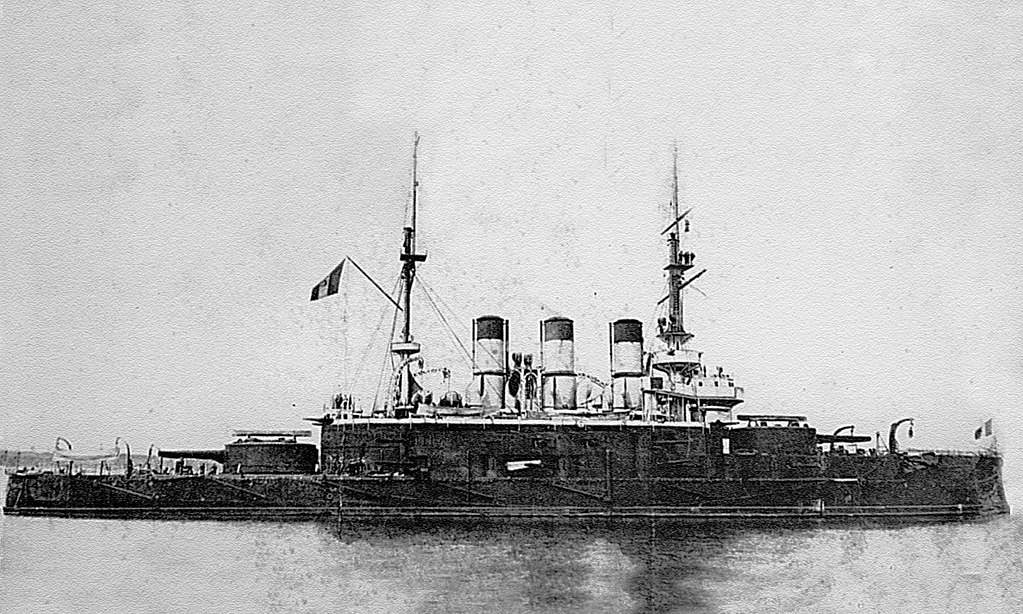
The Potemkine in Constanta, hoisting the Romanian Navy Flag. The mutiny was over.
It was time for realism about the failure of the mutiny. The Mutineers and Romanians negotiated a sortie: The latter agreed to give them asylum at the condition they would disarm themselves and surrender the battleship. The small TB however made the decision to return to Sevastopol instead, and surrender to local authorities. Captain Negru, the Romanian harbour commander came aboard at noon, hoisting the Romanian flag. The ship was then guided to the inner harbor. Matushenko however ordered to release the Kingston valves in order to sink the Potemkine. She slowly sat down on the bottom, half submerged, the bridge still above water and artillery ready to fire if needed.
Epilogue
Rear Admiral Pisarevsky was sent to Constanța on the morning of 9 July to retreive the Potemkine. He found the battleship half sunk and flying the Romanian flag, and negotiations started with the Romanian Government. Eventually, the battleship was handed over, a Russian Navy Ensign raised and she was refloated with relative ease. However salt water had damaged the engines and boilers. She was able however to leave Constanța with a new crew on 10 July, towed back to Sevastopol. She arrived there on 14 July to be renamed Panteleimon (after Saint Pantaleon) in October 1905, erasing the souvenir of the mutiny. There has been in the fall of the the year in November another attempt of mutiny onboard the protected cruiser Ochakov but it was easily suppressed. Later both Panteleimon and Ochakov were disarmed.
Eisenstein’s Movie (1922)
The entire movie – now in open source
The mutiny was immortalized in a movie that is still seen today in the top te most historically important movies of all time. Directed by Sergei Eisenstein in his 1925 this silent film was not shot on the real Battleship Potemkin, gone by then. It was filmed shortly after the Bolshevik victory in the Russian Civil War, but on the derelict battleship Dvenadsat Apostolov . Eisenstein emphasised the role of the mutineers, implying it failed because Matushenko and the other leaders were not committed Bolsheviks. He change some facts and bended events in order to dramatize the stiory, ignoring rioter and soldiers fighting and the very famous sequence on the steps. The emphasis was made on collective action and not individuals. Nowadays this movie can bee seen in its integrality for free, since rights are extinct.
Second life: Panteleimon in WW1
Panteleimon was fully restored in active conditions, her engines and boilers cleaned up, and she received an experimental underwater communications set in February 1909. The same year, she accidentally rammed the submarine Kambala, which was a total loss. She would visit again Constanța in 1911, but ran aground on 2 October. The damage was quite serious but it was not taken in account before several month. She made several training and gunnery sessions until 1912 and was repaired that year fully. The boiler foundations, plating and hull frames were replaced, in fact the whole powerplant was replaced. This ended on 25 April 1912.
She served as the flagship of the 1st Battleship Brigade in company of Evstafi, Ioann Zlatoust, and Tri Sviatitelia, while Rostislav shelled Trebizond on the morning of 17 November 1914. They were intercepted the next day by the Ottoman battlecruiser Yavuz and light cruiser Midilli back to Sevastopol (Battle of Cape Sarych). Conditions were foggy and Panteleimon held fire because her turrets could not spot the German ships until the end of the engagement.
The mouth of the Bosphorus on 18 March 1915 was agains shelled by Tri Sviatitelia and Rostislav, trying to divert troops and attention from Gallipoli. Panteleimon, Ioann Zlatoust and Evstafi were held as a distant cover north. The operation the next day was postponed due to heavy fog. In April however, Yavuz and other ships raided the Russian crimean coast, notably Odessa. The Russian battleship squadron scrambled in hot pursuit but never got the chance to close the distance. On 25 April Tri Sviatitelia and Rostislav made another raid, still the with the battleship as a northern cover and in May, twice the same battleships and Panteleimon shelled Turkish forts again.
On 9 May, Tri Sviatitelia and Panteleimon raided the forts and Yavuz intercepted the three covering ships but the duel stopped with no hit. Tri Sviatitelia and Pantelimon later however scored two hits on Yavuz before she broke off after a six hours chase. On 1 August, the Black Sea pre-dreadnoughts joined 2nd Battleship Brigade, replaced by the new dreadnought Imperatritsa Mariya class. On 1 October the latter provided distant cover for Ioann Zlatoust and Pantelimon to shell Zonguldak while Evstafi shelled Kozlu. Panteleimon also bombarded Varna twice (Bulgaia) in October 1915 and in 27 October she entered Varna Bay, hitting two anchored German submarines. She also supported Russian troops in 1916 after the capture of Trebizond and raided the northwestern Anatolian coast in January 1917.
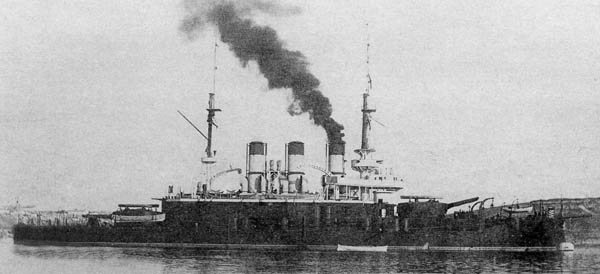
Photo of the Potemkine on navsource narod.ru
During this sweep, Panteleimon managed to sink 39 Ottoman sailing ships. On 13 April 1917 the February Revolution broke out, and the Panteleimon changed named for Potemkin-Tavricheskiy and on 11 May to Borets za svobodu (“Freedom Fighter”). She was placed in reserve in March 1918 but soon captured by Germans troops in Sevastopol to month later. The ship was handed over to the Allies after the Armistice but the British destroyed her engines in April 1919 before leaving Crimea. Bolsheviks then could not use her against the White Russians. She was captured by both the the Reds and Whites during the Civil War, and eventually abandoned by the White Russians in November 1920. She was left there to rot three years, and scheduled for scrap in early 1923, but only stricken in November 1925.
Read More/Src
Conway’s all the world’s fighting ships 1865-1921
https://www.historytoday.com/archive/months-past/mutiny-potemkin
https://www.britannica.com/event/Russian-Revolution-of-1905
https://russiapedia.rt.com/on-this-day/june-27/
http://www.dreadnoughtproject.org/models/ships/Panteleimon/
https://www.history.navy.mil/content/history/nhhc/our-collections/photography/numerical-list-of-images/nhhc-series/nh-series/NH-84000/NH-84829.html
https://www.historytoday.com/archive/focus-mutiny-potemkin
Wikipedia page
Modellers’s corner: Combrig’s Panteleimon WW1
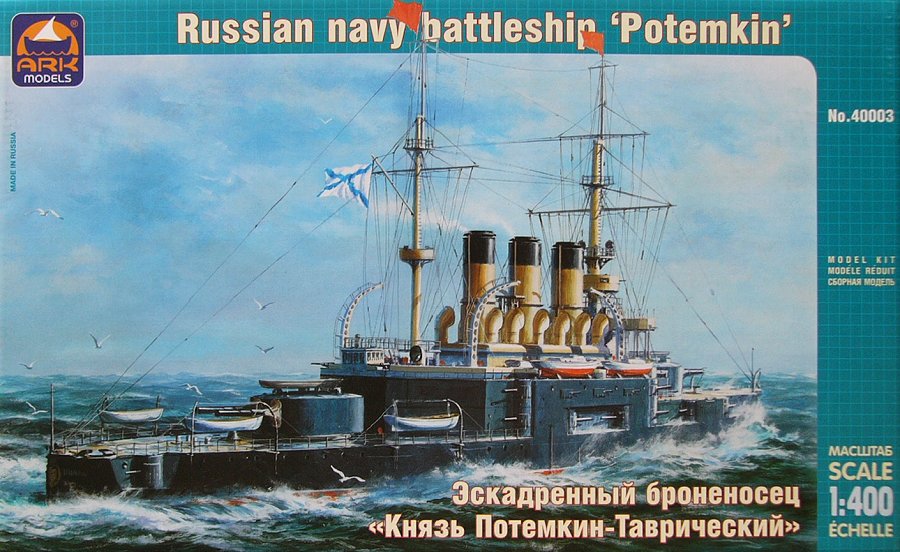
Ark Models 1/400 battleship Potemkine. The same modeller also made the Panteleimon in WW1
http://www.steelnavy.com/CombrigPanteleimon.htm
http://www.shipmodels.info/mws_forum/viewtopic.php?f=47&t=53175
http://hobbyport.ru/ships/potemkin_mk67.htm
http://www.modelshipgallery.com/gallery/bb/ru/potemkin-400-mda/mda-index.html
http://www.modelshipgallery.com/gallery/bb/ru/potemkin-400-rw/potemkin-index.html
http://www.papermodeling.net/en/179/
http://www.gdkits.com/images/ARK-40003.jpg
https://indy-amps.weebly.com/uploads/1/2/5/7/12576192/8431675_orig.jpg



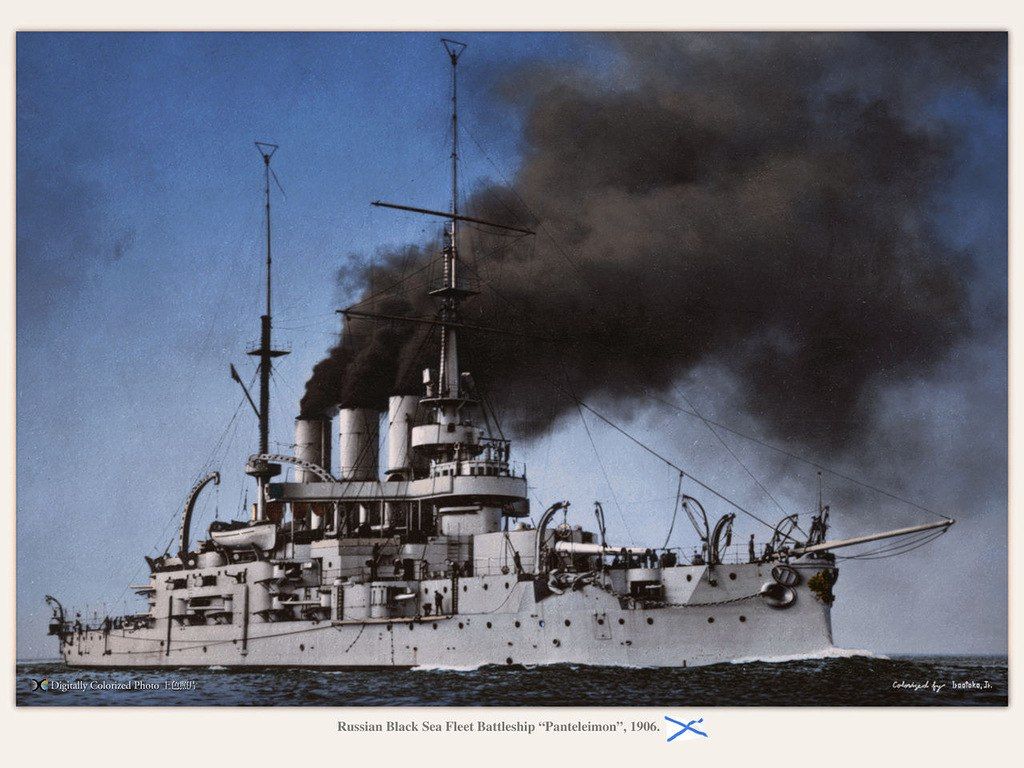
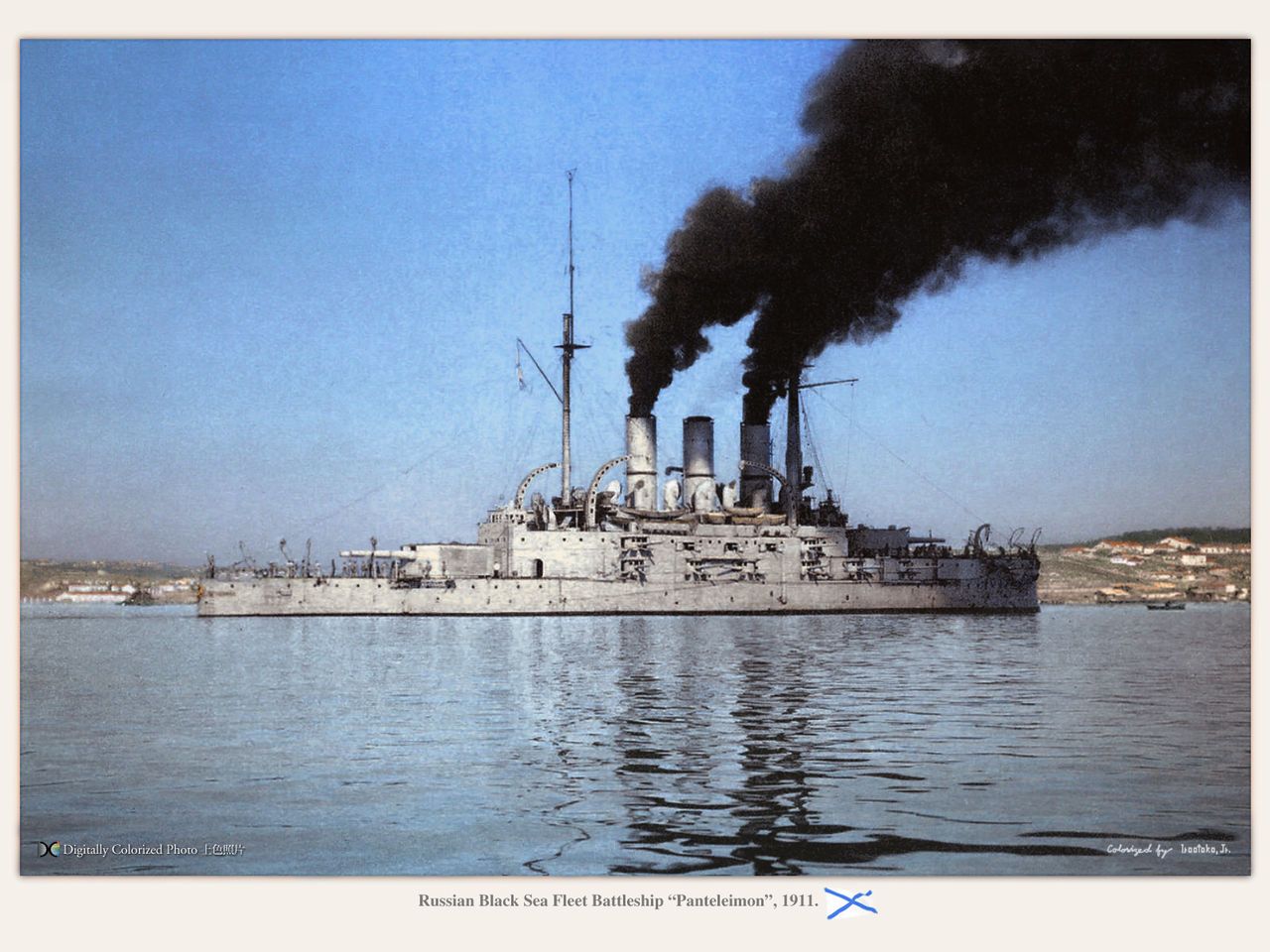
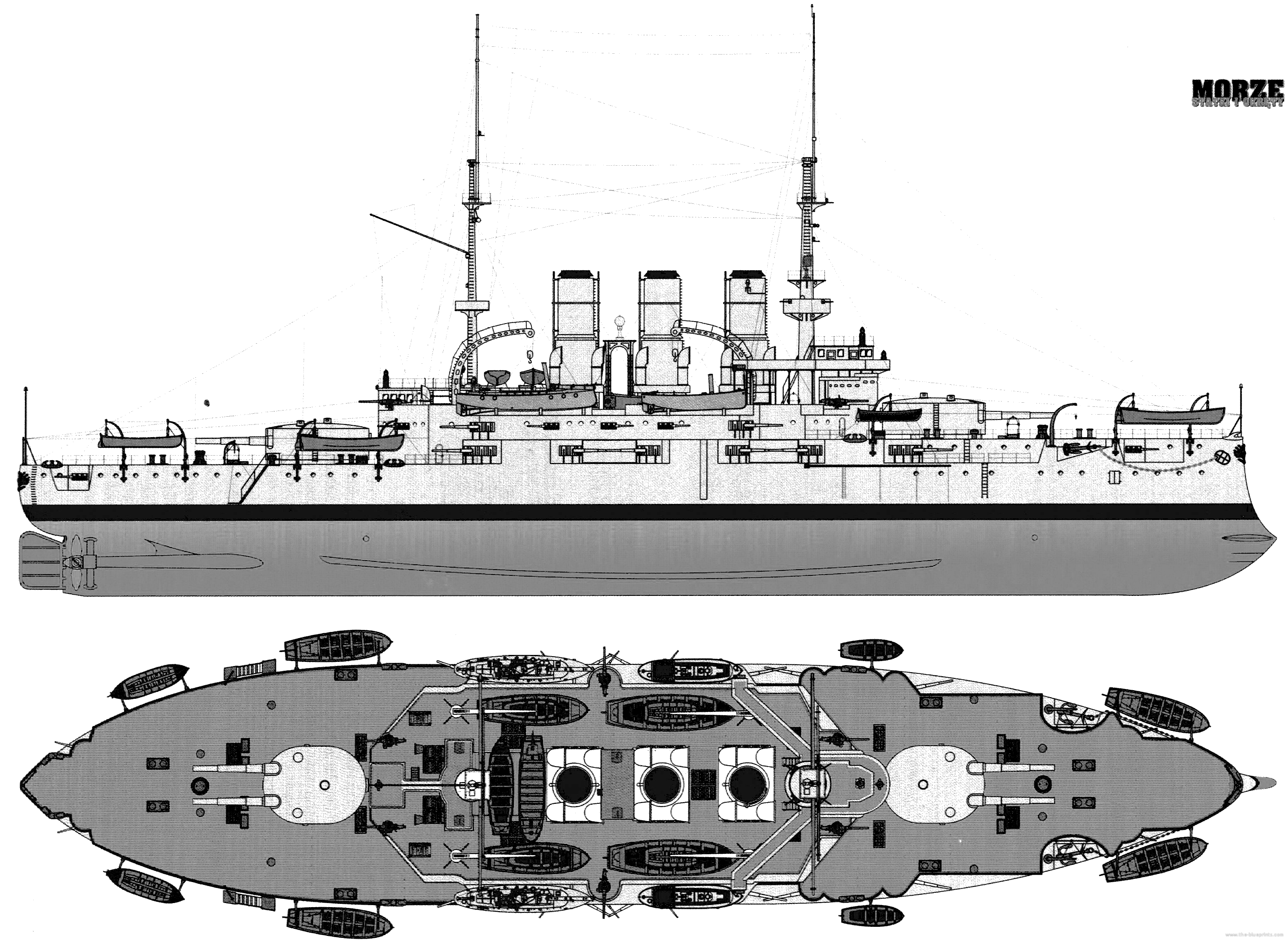
 Latest Facebook Entry -
Latest Facebook Entry -  X(Tweeter) Naval Encyclopedia's deck archive
X(Tweeter) Naval Encyclopedia's deck archive Instagram (@navalencyc)
Instagram (@navalencyc)





 French Navy
French Navy Royal Navy
Royal Navy Russian Navy
Russian Navy Armada Espanola
Armada Espanola Austrian Navy
Austrian Navy K.u.K. Kriegsmarine
K.u.K. Kriegsmarine Dansk Marine
Dansk Marine Nautiko Hellenon
Nautiko Hellenon Koninklije Marine 1870
Koninklije Marine 1870 Marinha do Brasil
Marinha do Brasil Osmanlı Donanması
Osmanlı Donanması Marina Do Peru
Marina Do Peru Marinha do Portugal
Marinha do Portugal Regia Marina 1870
Regia Marina 1870 Nihhon Kaigun 1870
Nihhon Kaigun 1870 Preußische Marine 1870
Preußische Marine 1870 Russkiy Flot 1870
Russkiy Flot 1870 Svenska marinen
Svenska marinen Søværnet
Søværnet Union Navy
Union Navy Confederate Navy
Confederate Navy Armada de Argentina
Armada de Argentina Imperial Chinese Navy
Imperial Chinese Navy Marinha do Portugal
Marinha do Portugal Mexico
Mexico Kaiserliche Marine
Kaiserliche Marine 1898 US Navy
1898 US Navy Sovietskiy Flot
Sovietskiy Flot Royal Canadian Navy
Royal Canadian Navy Royal Australian Navy
Royal Australian Navy RNZN Fleet
RNZN Fleet Chinese Navy 1937
Chinese Navy 1937 Kriegsmarine
Kriegsmarine Chilean Navy
Chilean Navy Danish Navy
Danish Navy Finnish Navy
Finnish Navy Hellenic Navy
Hellenic Navy Polish Navy
Polish Navy Romanian Navy
Romanian Navy Turkish Navy
Turkish Navy Royal Yugoslav Navy
Royal Yugoslav Navy Royal Thai Navy
Royal Thai Navy Minor Navies
Minor Navies Albania
Albania Austria
Austria Belgium
Belgium Columbia
Columbia Costa Rica
Costa Rica Cuba
Cuba Czechoslovakia
Czechoslovakia Dominican Republic
Dominican Republic Haiti
Haiti Hungary
Hungary Honduras
Honduras Estonia
Estonia Iceland
Iceland Eire
Eire Equador
Equador Iran
Iran Iraq
Iraq Latvia
Latvia Liberia
Liberia Lithuania
Lithuania Mandchukuo
Mandchukuo Morocco
Morocco Nicaragua
Nicaragua Persia
Persia San Salvador
San Salvador Sarawak
Sarawak Uruguay
Uruguay Venezuela
Venezuela Zanzibar
Zanzibar Warsaw Pact Navies
Warsaw Pact Navies Bulgaria
Bulgaria Hungary
Hungary

 Bundesmarine
Bundesmarine Dutch Navy
Dutch Navy Hellenic Navy
Hellenic Navy Marina Militare
Marina Militare Yugoslav Navy
Yugoslav Navy Chinese Navy
Chinese Navy Indian Navy
Indian Navy Indonesian Navy
Indonesian Navy JMSDF
JMSDF North Korean Navy
North Korean Navy Pakistani Navy
Pakistani Navy Philippines Navy
Philippines Navy ROKN
ROKN Rep. of Singapore Navy
Rep. of Singapore Navy Taiwanese Navy
Taiwanese Navy IDF Navy
IDF Navy Saudi Navy
Saudi Navy Royal New Zealand Navy
Royal New Zealand Navy Egyptian Navy
Egyptian Navy South African Navy
South African Navy






























 Ukrainian Navy
Ukrainian Navy dbodesign
dbodesign
nice encyclopedia, don’t get me wrong, but the designs part doesn’t show how tall the warship is